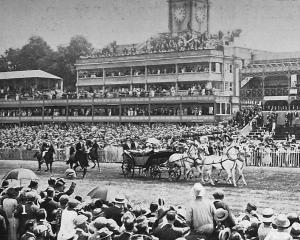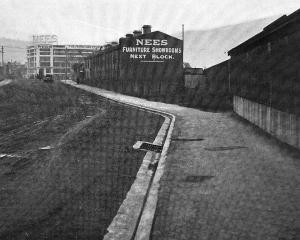
The area is nearly as large as that of the Hendon Aerodrome, and consists of good light pasture land. Lieutenant J. W. H. Scotland (the New Zealand aviator who recently returned from Mesopotamia) spent some days inspecting the various sites offered, and considered the one selected very suitable for the purpose. The flying ground will be convenient of access, being under six miles from Christchurch, and accessible by tram or rail, and should prove attractive to visitors. The preparation of the ground will be taken in hand immediately, fences and trees removed, and minor preparation of the surface attended to. Hangars and repairing shops will be built, and accommodation provided for staff and pupils.
In connection with the Somme offensive there seems to be a tremendous development of aerial activity, and the losses of machines on both sides are mounting up in striking manner. The Germans, as usual, make early and great claims to success, but their success, whatever it is, is due to the fact that all the fighting is done behind their lines. All that they can claim is that they have ``downed'' several of the Allies' machines, the number of which they exaggerate by reporting a second time those lost in prior engagements. Beyond the loss of machines, all the advantages are on the Allies' side. The British and French airmen attack positions and railways and bring back valuable information as to what is going on behind the enemy's lines. The Germans, on the other hand, are held behind their lines, and are unable therefore to detect what is transpiring behind the lines of the Allies. The Allies' planes are a mark for German rifles and anti-aircraft guns, but the German machines fighting above their own lines are immune from this description of attack. Many of the Allies' losses are not due to the results of aerial contests, but to the fire from the ground below. In the air the Allies still hold complete ascendancy, as is indicated by the fact that the artillery of the enemy has been completely blinded and has to grope for its targets.
Mr Ayson, who visited the Kakanui River, was delighted to learn of the successful acclimatisation of tench in the Waiareka and Kakanui streams, and accepted with thanks the offer of the Waitaki Acclimatisation Society to send him specimens for the Newtown (Wellington) Aquarium, as, though efforts were made some years ago by Mr Johnston, of Opawa, to acclimatise tench by distribution to various acclimatisation societies, this was the most successful introduction of these fish. - ODT, 25.10.1916.
COPIES OF PICTURE AVAILABLE FROM ODT FRONT OFFICE, LOWER STUART ST, OR WWW.OTAGOIMAGES.CO.NZ












